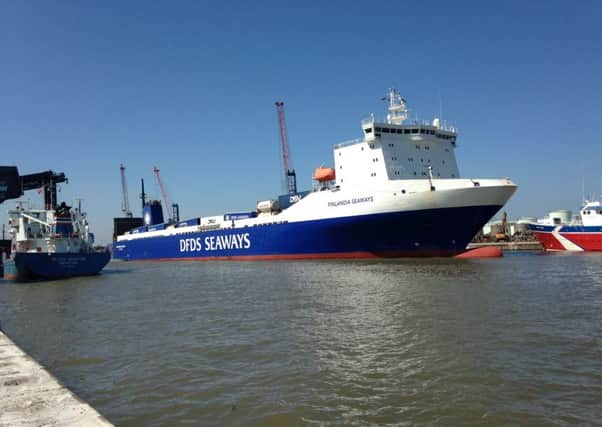Comment: Investment good but why no passengers?


That’s unfortunate, as the announcement that more than ¤6 million (£4.3m) is to be pumped into the Rosyth-Zeebrugge route is a shot in the arm for a 13-year-old service that has had a choppy ride. The cash injection will lead to an increase in freight capacity, through the double-stacking of containers on board the DFDS Seaways vessel that plies the route, new environmental technology and a “fuel optimisation” programme.
Confirmation of the investment followed high-level talks involving the bosses of Rosyth-owner Forth Ports and DFDS as well as our First Minister. The basis for the plans had been laid back in November, when a memorandum of understanding was signed by the two companies and the Scottish Government.
Advertisement
Hide AdAdvertisement
Hide AdThe link to continental Europe had been threatened with closure after DFDS said it would have to switch from heavy fuel oil to more expensive low-sulphur marine gas oil to meet a new European directive.
It’s welcome news that a deal has been thrashed out, with the investment programme providing some longer-term certainty for this vital continental connection. However, it is also an opportunity missed.
During its first eight years of operation it was possible to make the 20-hour journey as a tourist, using the route as a convenient launchpad into the heart of the European road network.
The time at sea was treated as something of a mini-cruise by those using it and eliminated the 1,000 miles of motorway driving associated with getting to and from one of England’s southern ports or the Channel Tunnel. Indeed, the twin vessels utilised by the route’s initial operator, Greek outfit Superfast Ferries, felt more like cruise ships than a typical ro-ro car ferry, with upmarket cabins, fine dining and late-night entertainment.
I made the trip three summers on the trot, along with the thousands of other Scots and incoming continentals who sailed over the years, but that steady patronage was insufficient to sustain the service. It’s hard to understand why it didn’t measure up. While never a budget option there were decent time/cost savings to be made over the sea-going alternatives.
In 2010, the axe was taken to the passenger element and the route became the freight-only one that it remains today. It’s all rather frustrating, particularly as the infrastructure is all there. Plus there’s a shiny new Forth crossing opening next year to speed holidaymakers to and from Scotland’s central belt.
I don’t know if the restoration of the passenger service was part of those talks. It should have been. There was much lobbying ahead of Scotland gaining its first continental ferry link, and plenty of fanfare surrounding its arrival in 2002. Those voices ought to be raised again if we are to avoid continuing with the current operation. «